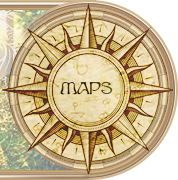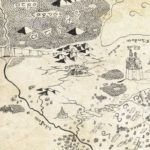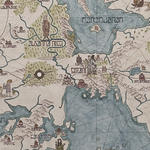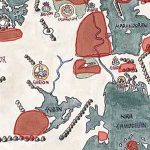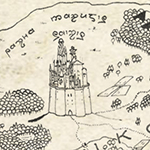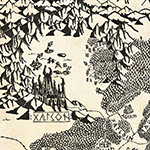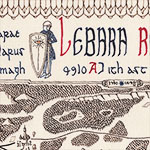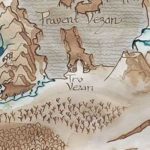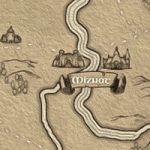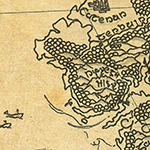COUNTRY
If a pilgrim, with his eyes open, trods the white paths of the undulating landscape of the northwest Sirania, he can spot many wonders. These are not visible, miraculously wonderful sights of terrible mountain ranges, raging seas or great cities but barely sightable marvels of the ancient Living World. In many ways, the land around Asvittara maintains the nature of the ancient times, perhaps because it lies, unmoving, on the intersection of many tangential ”realms”.
The heart of a common traveller will rejoice at the quiet safety of the quaint paths that wind through the country like tiny brooks of white stone. They are not very wide and there is grass spurting out from between the individual cobbles of warm limestone. These are ancient roads, build by the old Birikans, who lived there side by side with the Elves before the arrival of the Siranians. The roads are hemmed by blooming pastures and orchards while in between, a forest, predominantly oaken in nature but adorned with numerous birches, spreads its wide arms.
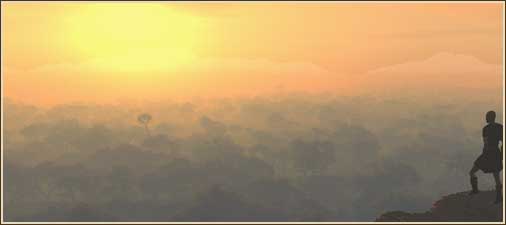
And yet anyone who keeps their eyes open sees beyond this sun-filled surface of the landscape. They see the woods are riddled with thousands of paths, the pastures still hold ancient stone circles and the old cults have not been forgotten. They see cracks and fissures and chasms hidden in the depths of the woods, the crumbled little bridges that once spanned over them. An observant pilgrim will smell a peculiar odour of this place, which in many ways is the last stronghold of the Empire.
The country of Asvittara is the furthest northwestern outpost of Sirania and it is here where the sun lays its last beam in the noonday glare of the Realm of the Middle before entering the semi-darkness of the north or the west. It is also the last stronghold of the Elven woods in the north, and the ancient magic of leaf and root is still alive here both in the water and the earth. The king of Asvittara is the last of the Half-elven line and the only one in Grand to rule both of the peoples equally. The birch woods of the Free country reaches in from the southwest and end here as well, bringing with them their will and their scent.
THE ROYAL CITY OF ASVITTARA

Asvittara is among the few cities that have never been conquered by the enemy. This is mainly due to the natural location of this settlement: Asvittara is situated on rocky islands above numerous chasms and abysses. In ancient times, the face of the earth was disturbed here by many planar fractures that literally separated entire smaller areas from the surrounding mass. The cataclysm plunged some of those areas into the depths while others got merely divided by less significant breaks, remaining on the level with the rest of the surrounding landscape, or above it.
In fact, Asvittara is a stony heap consisting of these islands interconnected with bridges big and small. Some of the islands lie below the level of the surrounding land, others are higher. The main island with its substantial expanse – it is, in fact, larger than the capital of Sirgon – is on the same level with the neighbouring landscape, and the most elevated of the islands, which harbours the Royal Citadel, is directly to the north from it. The broken and crumbled remains of bridges above some of the chasms are the silent reminders of there having been other islands, which met their doom in the depths of the earth. Yet it is said the powerful can walk over a broken bridge right into the heart of a vanished island.
The architecture of the city is the embodiment of beauty and elegance. When a person passes through the city, at times they don’t seem to see its buildings at all – so profound is the connection between nature and craftsmanship. The houses reminiscent of rocks, oak-woods or dreamy paintings are artfully build from stone and misty metal. The halls, squares and temples breathe elegance through their tree-like stone pillars and decorations resembling silver-green leaves. In the windows, whose stained glass seen from afar gives the impression of a bowed oaken branch, light curtains float and flutter, reminding the observer of smoke or vapour. Owing to the great expanse of the city, there are numerous groves and peaceful corners, even whole patches of woodland.
There are also busier, more densely populated places: wide sun-lit streets with stone houses similar to the Siranian buildings, squares and market-places buzzing with voices, songs of wandering bards and mumblings of merchants.
The city is far from unprotected but its defences are unmanifested, and so the impatient or unobservant won’t perceive it.
As far as the physical strength is concerned, there are dexterously camouflaged turrets and defence stations scattered alongside the entire border of the inhabited islands, mainly at the bridges or in those places where the opposite sides of the chasms are close to one another. Then there is the inner city, surrounded by an elegant yet highly functional wall, and finally the Royal Citadel, a shining white Elven fortress towering above the city with such imposing power even a seasoned veteran can entertain no doubt about its invincibility. Moreover, those more familiar with the city’s inhabitants will know that each and every one of them – every man, woman and child, every white-haired elder – practice archery with great fervour and devotion.
On the other hand – and this, it must be said, is of far greater importance to the citizens of Asvittara – as far as the invisible forces are concerned, the city is already protected by its very nature. For it is said that Asvittara, to a certain degree at least, shares features with the so-called Hidden places – Elvish abodes accessible only at a particular time, from a particular spot and merely to some people. Moreover, such places are found only in certain areas, everywhere and yet nowhere at once. Asvittara is surrounded by a labyrinthine complex of abysses that have never been fully mapped, and the old paths, preserved from the Birikan times, can be treacherous and tangled, especially at night. Thus it often happens that an enemy of Asvittara, though he be travelling for many days, seemingly catching glimpses of the Royal Citadel among the trees far on the horizon every now and then, he never gets a step closer, despite all his trouble. The city is also said to be under the auspices of the King himself, and he summons or refuses visitors as he wishes. Those more familiar with the secrets and mysteries of witchcraft and wizardry can feel the King’s willpower as they approach the city. However, in the time of peace, its gates stand wide open, the bridges and roads teems with merchant carriages and no one notices a thing.
KING AND PEOPLE
Asvittara is inhabited by Men and Elves. Both nations live together in peace, complementing and influencing one another, so the local Elves are more similar to the humans and the humans to the Elves than is perhaps common in other places. And yet there exist a certain tension between the two nations – it is not evil but quiet and tragic in nature, fed by mutual shyness and love. Such tension and division within unity have been observed in Siranians themselves but also in the Wood Adamantians and other nations.
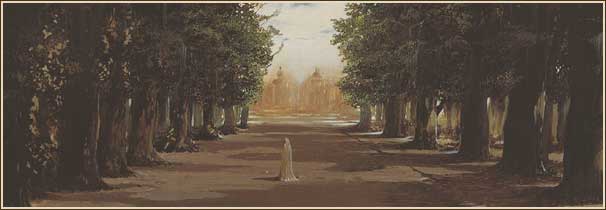
The Elves in the city come from the ranks of the Grey Elves. They are more human in many ways – they are driven by a greater urge to change and to create, their mirth is more earthbound, their curiosity humanly passionate. The University of Sciences in Asvittara is the most renowned institution dedicated to the study of languages, systems of writing, histories, nations and cultures as well as the arts and the psyche. The study is very long and very profound and the students, above all else, leave the university wiser.
The humans of Asvittara appear more elvish – the influence of their Elven companions as well as the occasional mingling of bloods have softened their features and manners, deepened their emotions and prolonged their lives. They have learned the Elven way of life together with their “diet”, which is in such a deep resonance with the nature that it’s practically an elixir of youth. The humans of Asvittara dress in the Elven fashion; they speak pure Elvish and live the Elven way. Therefore, an accidental traveller is not able to distinguish the Man from the Elf and vice versa.
The only difference between the two peoples is that while the Men die, the Elves are immortal. Their mutual coexistence only strengthens this tragedy. Those humans who attain “elfhood” and are thus indistinguishable from their Elven friends and brethren one day realize they have been touched by old age and while their eternally young Elven companions keep feasting, travelling and studying, they only hobble around slowly approaching death. On the other hand, the Elves, who, owing to the company of Men, have been infected by the human part of the soul, their hastiness and ways of living can hardly bear the everlasting duration of this semi-human life. To live forever is natural for the Elven soul, but the Elves of Asvittara have often souls that are partly human and yet must carry the burden of eternity, for which they are not ready.
The king of the city, a figure from the ancient times, is called the Southernmost of the Elven Kings and the Easternmost of the Rulers of Men as his family lines reach back in both directions, and before uniting Asvittara with the Siranian Empire, in the times when the city was a separate kingdom, he was, as history has it, more tied with the north and the west than with the east, where the city of Sairis has always stood, eternal and everlasting.
